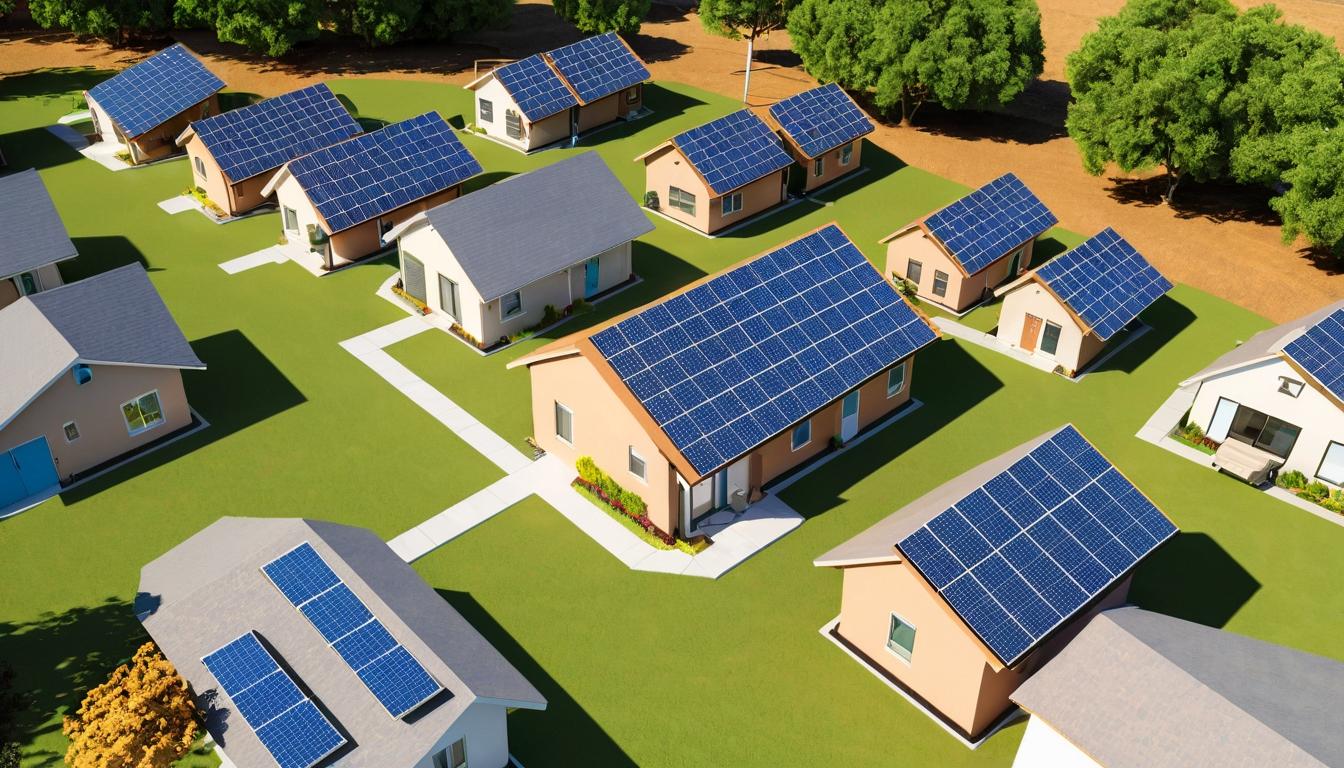Across suburban neighborhoods from California to Connecticut, a quiet revolution is unfolding on rooftops that most people never notice. While politicians debate energy policy and corporations announce grand sustainability initiatives, American homeowners are taking matters into their own hands—one solar panel at a time. This grassroots movement represents the most significant shift in how ordinary people interact with energy since rural electrification nearly a century ago.
What's driving this transformation isn't just environmental consciousness or government incentives, though both play important roles. The real story lies in the dramatic cost reductions that have made solar power economically compelling for millions of households. Over the past decade, the price of residential solar installations has plummeted by more than 60%, turning what was once a luxury for eco-conscious elites into a practical financial decision for middle-class families. The numbers tell a compelling story: solar accounted for 45% of all new electricity generation capacity added in the U.S. last year, outpacing every other energy source.
The technology behind this revolution has evolved in ways that would astonish anyone who hasn't kept up with solar advances. Today's panels aren't the clunky, obvious blue rectangles of a decade ago. Manufacturers have developed sleek black panels that blend seamlessly with roofing materials, while new bifacial designs capture sunlight from both sides, increasing energy production by up to 30%. The most exciting developments are happening at the microscopic level, where perovskite solar cells promise to revolutionize efficiency while dramatically reducing manufacturing costs.
Storage technology has emerged as the crucial companion to solar panels, solving the fundamental problem of what happens when the sun doesn't shine. Lithium-ion batteries have become smaller, safer, and more affordable, with some systems now capable of powering an entire home through the night. The real breakthrough, however, lies in how these systems communicate with the grid, allowing homeowners to sell excess power back to utilities during peak demand periods—creating what amounts to a distributed virtual power plant.
Financing innovations have democratized access to solar power in ways that were unimaginable just a few years ago. Power purchase agreements and solar leases have eliminated upfront costs for many homeowners, while property-assessed clean energy programs allow people to finance installations through their property taxes. The result is that households with modest incomes can now participate in the solar revolution alongside wealthy early adopters.
The impact extends far beyond individual utility bills. Communities are discovering that distributed solar creates local jobs that can't be outsourced—from installation crews to maintenance technicians. School districts are using solar savings to fund educational programs, while municipalities are finding that solar installations on public buildings free up budget dollars for essential services. The economic benefits ripple through local economies in ways that centralized power generation never could.
As solar adoption accelerates, it's creating unexpected challenges and opportunities for the traditional utility model. The grid was designed for one-way power flow—from large generating stations to consumers. Now, with millions of homes potentially feeding electricity back into the system, utilities must reimagine their entire business model. Some are fighting this transition, while forward-thinking companies are embracing their new role as managers of a complex, bidirectional energy network.
The regulatory landscape remains a patchwork of conflicting policies that can determine whether solar makes economic sense from one neighborhood to the next. Net metering rules, interconnection fees, and permitting requirements vary dramatically across jurisdictions, creating a complex maze that homeowners must navigate. Yet even in areas with less favorable policies, the fundamental economics of solar continue to improve, suggesting that policy barriers may only delay rather than prevent widespread adoption.
Looking ahead, the integration of solar with other smart home technologies promises to create homes that not only generate their own power but manage it with unprecedented efficiency. Electric vehicles are becoming mobile storage units that can power homes during outages, while smart appliances can automatically shift their operation to times when solar production is highest. The home of the near future will be an integrated energy ecosystem rather than just a passive consumer of electricity.
The environmental benefits extend beyond reducing carbon emissions. Rooftop solar reduces strain on transmission infrastructure, minimizes land use for energy production, and decreases water consumption compared to conventional power plants. As climate change intensifies, these co-benefits become increasingly valuable, making solar not just an environmental choice but a practical adaptation strategy.
What makes this revolution particularly remarkable is how it's happening largely through individual decisions rather than top-down mandates. Families are choosing solar for reasons ranging from financial savings to energy independence to environmental concerns. The common thread is a desire for greater control over their energy future—a sentiment that crosses political and demographic lines.
The solar transformation on American rooftops represents more than just a shift in how we generate electricity. It's part of a broader movement toward decentralization and local resilience that's reshaping everything from food systems to manufacturing. As technology continues to advance and costs keep falling, this quiet revolution seems destined to become the new normal—changing not just where our electricity comes from, but how we think about energy itself.
The solar revolution is quietly transforming American rooftops and reshaping our energy future

